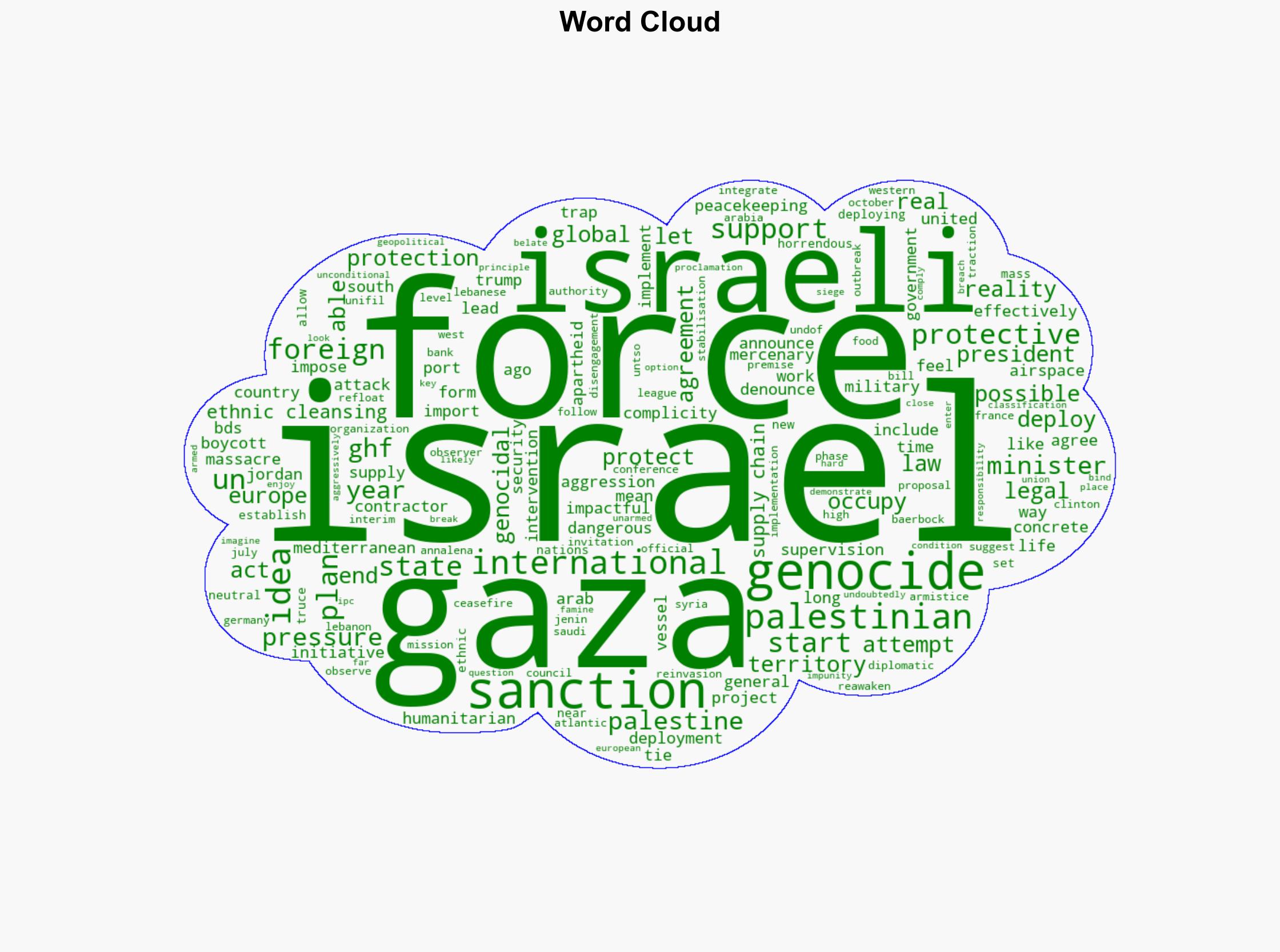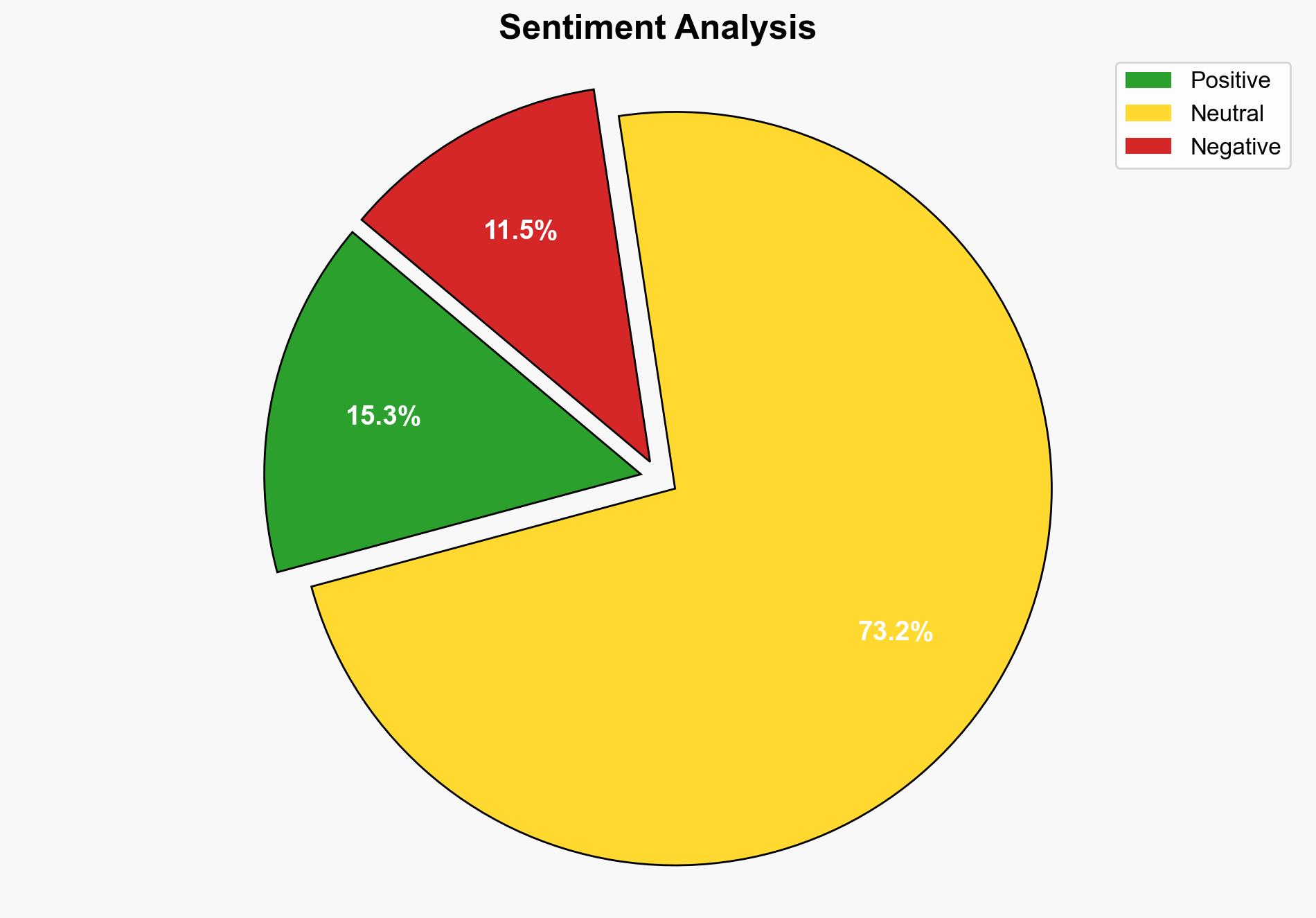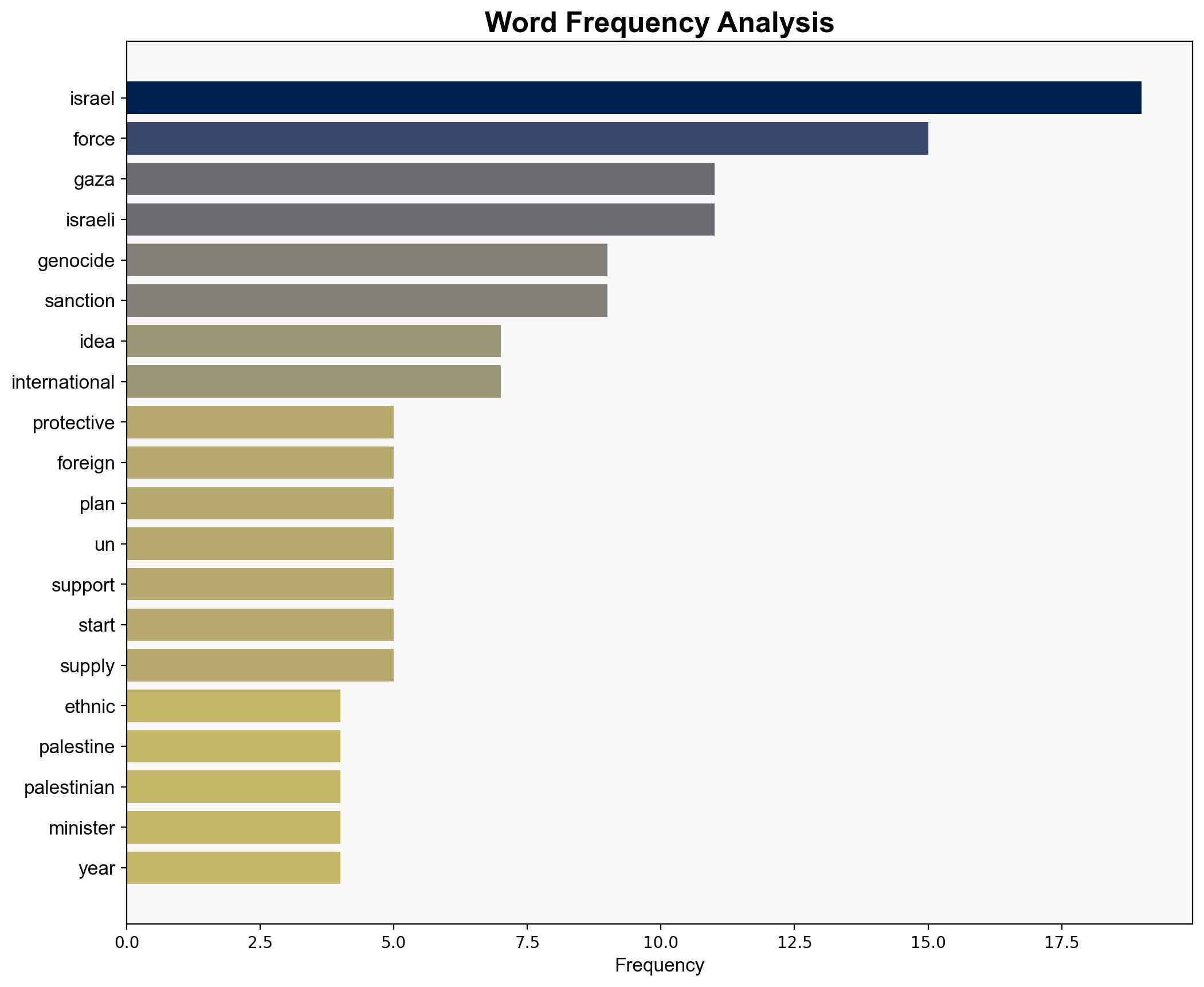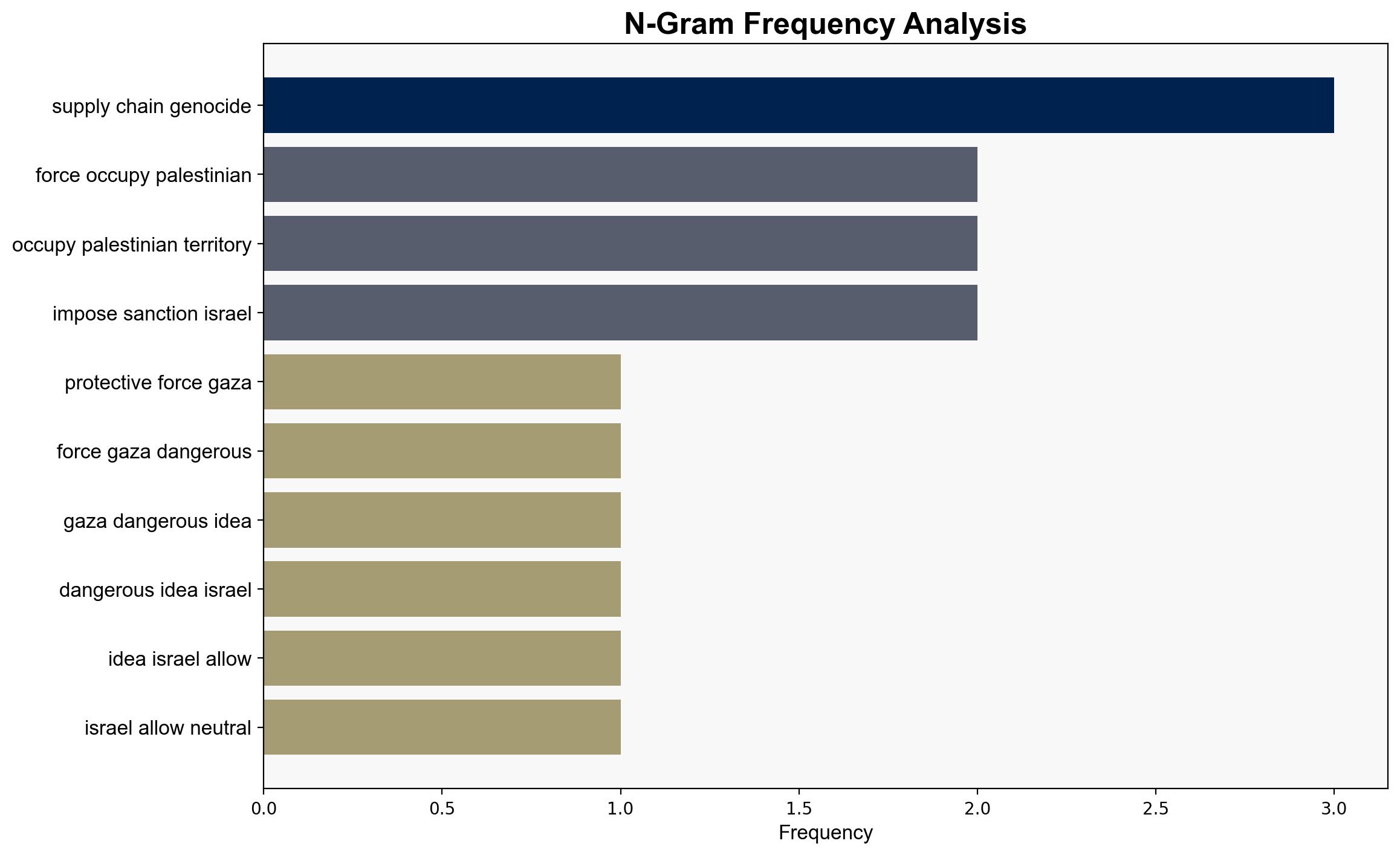Why a protective force for Gaza could be a dangerous idea – Al Jazeera English
Published on: 2025-09-09
Intelligence Report: Why a protective force for Gaza could be a dangerous idea – Al Jazeera English
1. BLUF (Bottom Line Up Front)
The most supported hypothesis suggests that deploying a protective force in Gaza could exacerbate tensions and lead to further conflict, given Israel’s likely opposition and the potential for international forces to be perceived as biased. Confidence level: Moderate. Recommended action: Engage in diplomatic efforts to address humanitarian needs without military intervention, focusing on negotiation and conflict resolution strategies.
2. Competing Hypotheses
1. **Hypothesis A**: A protective force in Gaza could stabilize the region by deterring aggression and providing humanitarian aid, leading to long-term peace and security.
2. **Hypothesis B**: The deployment of a protective force could escalate tensions, as Israel may perceive it as a threat to its sovereignty, potentially leading to increased violence and regional instability.
Using ACH 2.0, Hypothesis B is better supported due to historical precedents of Israel’s response to international interventions and its strategic interests in maintaining control over the region.
3. Key Assumptions and Red Flags
– **Assumptions**: Hypothesis A assumes international forces can remain neutral and effective in conflict zones. Hypothesis B assumes Israel’s opposition will lead to conflict escalation.
– **Red Flags**: Lack of clear international consensus on the role and rules of engagement for a protective force. Potential bias in media reporting and political rhetoric.
– **Blind Spots**: Underestimation of local Palestinian perspectives and the potential for non-state actors to influence outcomes.
4. Implications and Strategic Risks
– **Geopolitical Risks**: Increased tensions between Israel and international actors could lead to broader regional conflicts, impacting global security.
– **Economic Risks**: Disruption of trade routes and economic instability in the region.
– **Psychological Risks**: Heightened fear and mistrust among local populations, potentially fueling radicalization.
5. Recommendations and Outlook
- **Mitigation**: Prioritize diplomatic channels to address humanitarian issues, leveraging international organizations for non-military aid.
- **Opportunities**: Strengthen regional alliances to promote dialogue and conflict resolution.
- **Scenario Projections**:
– **Best Case**: Successful diplomatic intervention leads to a ceasefire and humanitarian relief.
– **Worst Case**: Military intervention triggers widespread conflict, destabilizing the region.
– **Most Likely**: Continued tension with intermittent skirmishes and humanitarian challenges.
6. Key Individuals and Entities
– Annalena Baerbock
– Philippe Lazzarini
– Donald Trump
– Bill Clinton
7. Thematic Tags
national security threats, regional focus, conflict resolution, humanitarian intervention




